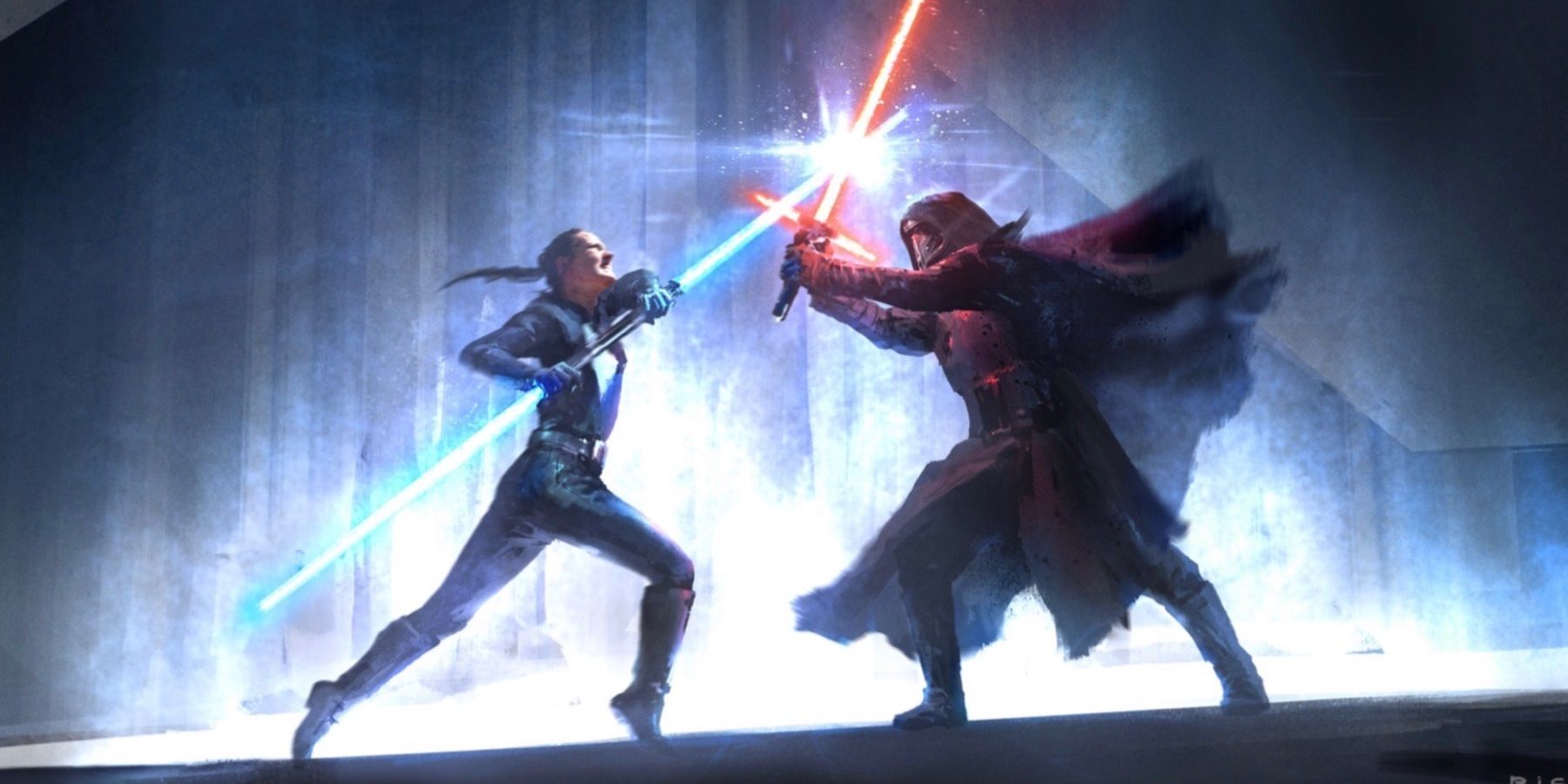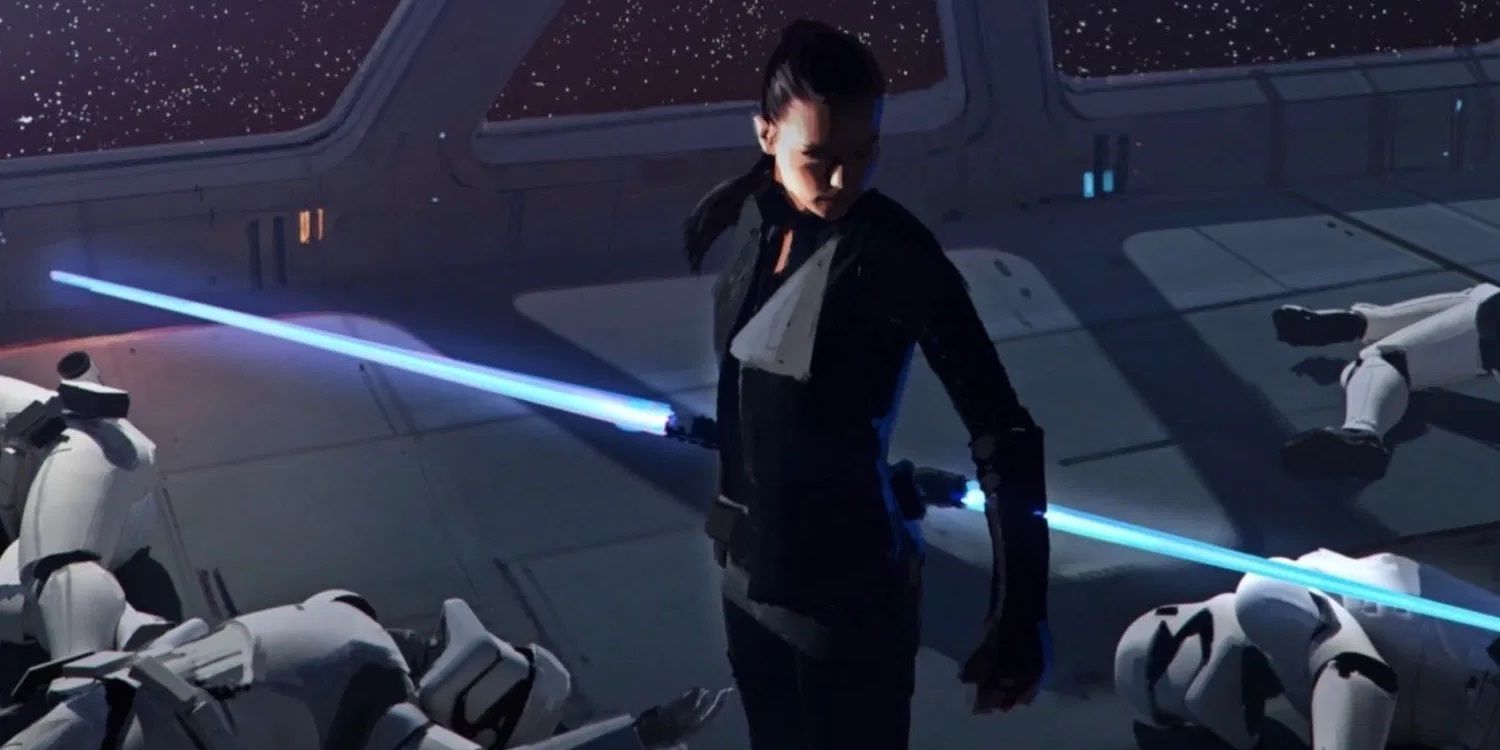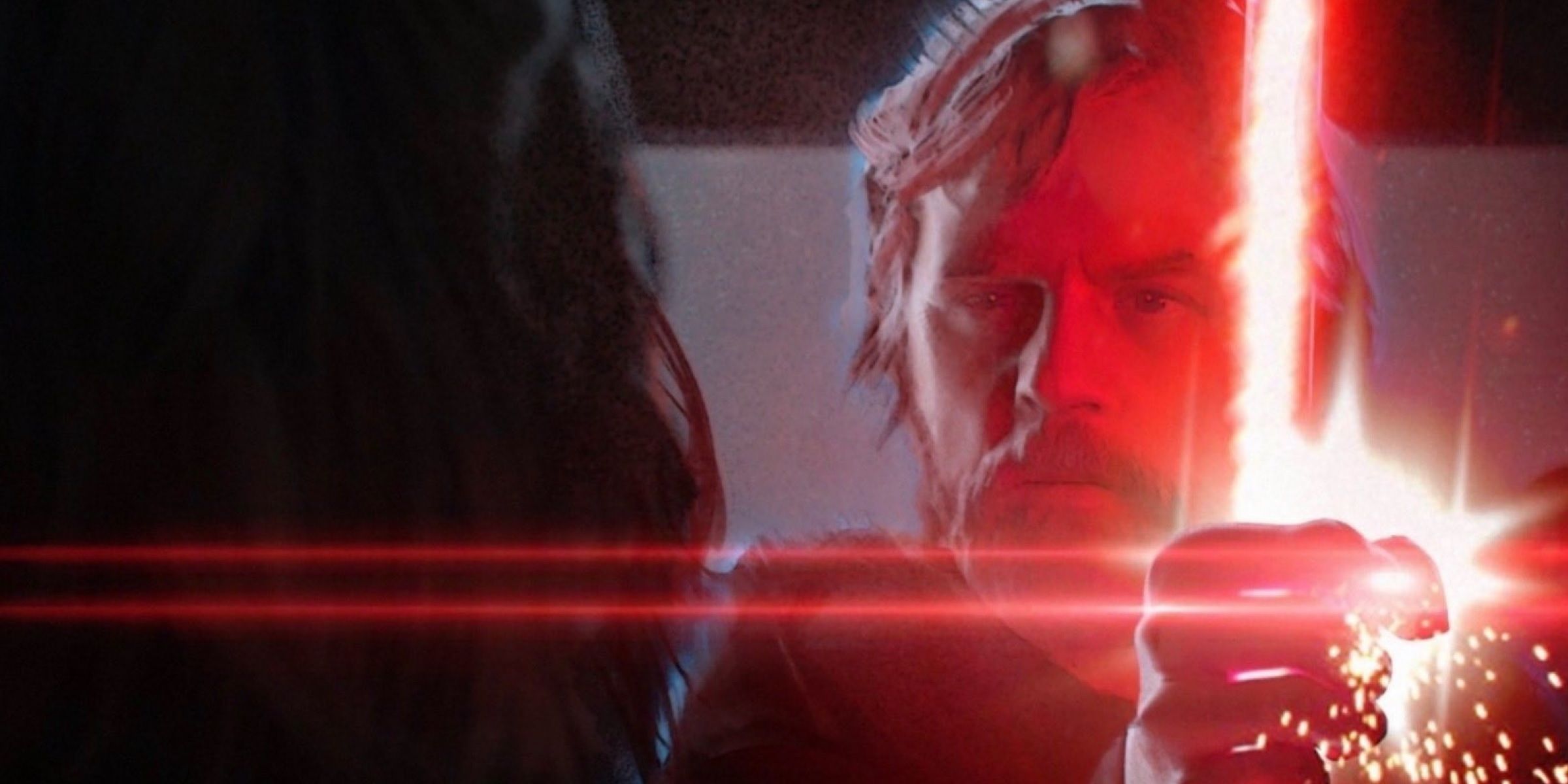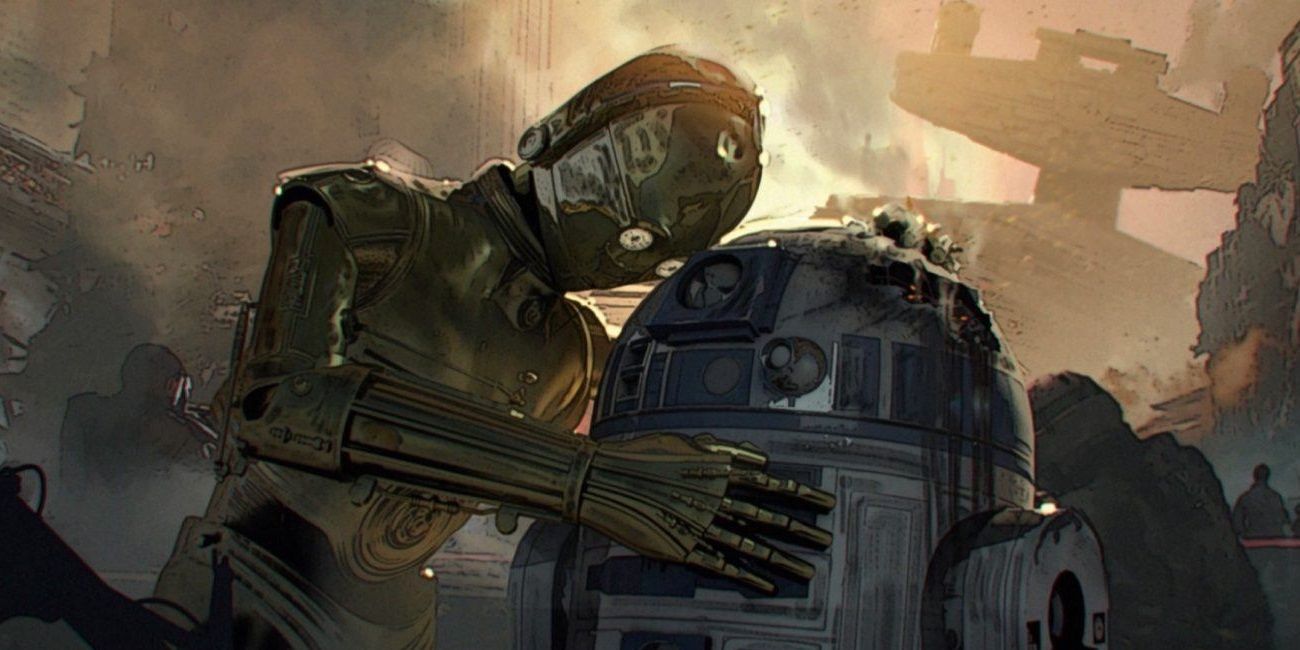
Kathleen Kennedy initially hired Jurassic World’s Colin Trevorrow to direct Star Wars Episode IX to follow up J.J. Abrams’ The Force Awakens and Rian Johnson’s The Last Jedi and conclude the sequel trilogy. However, after Trevorrow wrote several drafts of a script titled Duel of the Fates, Kennedy fired him and began looking for a new filmmaker to come up with an ending for the entire Star Wars saga on an accelerated schedule. Eventually, Abrams returned to the director’s chair and got to work on what became The Rise of Skywalker.
A few weeks after The Rise of Skywalker hit theaters and was widely panned, Trevorrow’s unused script and some related concept art leaked. The general consensus was that it seemed like a much more satisfying conclusion to the saga than Abrams’ effort. We can only speculate on how the actual movie would’ve turned out – movies have to take a very long journey from the page to the screen – but the script and concept art alone have more coherence and imagination than anything in the final cut of The Rise of Skywalker. Trevorrow’s script provided closure on all the Star Wars sequel trilogy’s unplanned storylines and gave a spotlight to squandered characters like Finn, Poe, and Rose.
RELATED: Return Of The Jedi Was The Perfect Ending For The Skywalker Saga
The leaked Duel of the Fates script is dated 2016, a year before Trevorrow was fired, so it wasn’t the final draft, but it was quite far along. There are certain logistical ways that Trevorrow’s script wouldn’t have worked on the screen, namely that Leia is the star. After Episode VII was Han’s movie and Episode VIII was Luke’s movie, Trevorrow wrote Episode IX as Leia’s movie. After Carrie Fisher’s untimely passing, Trevorrow would’ve had to alter his script significantly. But Leia isn’t the only character who’s well-served in this script. Every underserved sequel character trilogy gets a substantial arc in Duel of the Fates. Rose gets more screen time in the opening scene – a Resistance mission to infiltrate a Star Destroyer – than she gets in the entire 142-minute final cut of The Rise of Skywalker. In the Duel of the Fates script, the relationships between characters like Rey and Poe are much more developed and defined than they are in the final product, too.

Whereas Finn spends the entirety of The Rise of Skywalker trying to get Rey’s attention (and he doesn’t even get to tell her what he wants to tell her), he gets a much clearer arc in Duel of the Fates. In an early scene, he encourages a wounded Stormtrooper to follow in his footsteps: leave the First Order, pick a name, and “find something worth fighting for.” He’s shown to have taken on Poe and Rose’s wisdom from the previous two movies and grown as a result. Finn eventually becomes a revolutionary leader, galvanizing Stormtroopers and their prisoners in the fight against their oppressive overlords. This is a much better storyline than just yelling Rey’s name from afar.
After being very vocal about his creative disagreements with Rian Johnson over Luke’s portrayal in The Last Jedi, Mark Hamill said he was on the same page with Trevorrow about Luke’s characterization in Duel of the Fates. In the script, Luke’s ghost travels all over the galaxy, imparting wisdom to Rey and Leia and haunting Kylo Ren, which works better than his glorified cameo appearance in The Rise of Skywalker, which reveals that he stayed on his isolated island on Ahch-To even after becoming one with the Force.
When The Rise of Skywalker finally introduced the Knights of Ren, they just stood around and looked cool. They didn’t do anything until their final fight with Ben Solo, which had no impact because his relationship with his knights was never explored. For some reason, The Rise of Skywalker introduced a bunch of new elements like Palpatine’s resurrection and Jannah’s relationship with Finn instead of paying off old ones like “Broom Boy” and, indeed, the Knights of Ren. In the Duel of the Fates script, the Knights of Ren are all individually characterized (two of them work together, one is the wildcard etc.).

Unlike the previous two Star Wars movies, Duel of the Fates goes out of its way to show the extent of the First Order’s rule. In the opening text crawl, it’s established that Kylo Ren has cut off communications between systems. There are some dark scenes showing the First Order’s iron-fisted rule over the galaxy, including a public execution with a lightsaber guillotine. The script also establishes that the First Order has set up shop on Coruscant, the city-planet featured heavily in the prequel trilogy, where a lot of the script’s action takes place.
As everyone predicted when Kylo Ren was introduced as a knockoff Darth Vader in The Force Awakens, he gets an empty, unearned redemption at the end of The Rise of Skywalker, despite The Last Jedi giving him ample opportunities to return to the light side to hammer home the idea that, unlike Vader, this guy is irredeemable. In Trevorrow’s Duel of the Fates script, Kylo isn’t redeemed. He comes close to the light but doesn’t turn, which feels much more genuine to his character.
In Duel of the Fates, the final duel is Rey vs. Ben, not Rey and Ben vs. zombie Palpatine. Rey vs. Ben is not only more visually engaging; it feels more like the culmination of the trilogy than the out-of-nowhere inclusion of a resurrected Palpatine. There’s no toxic romantic tension between Rey and Ben in this one, either. At the climax of the duel in Trevorrow’s script, Rey has a more impactful and character-defining send-off than “I am all the Jedi,” which was cribbed from Endgame’s “I am Iron Man” moment. In Duel of the Fates, she says, “I will not deny my anger and I will not reject my love. I am the darkness and I am the light.” Kylo replies, “You are nothing! You are no one!” Rey simply says, “No one is no one.” At the end of the duel, both Rey and Ben die, but in the afterlife, Yoda offers Rey the chance to come back to life and help the galaxy heal.

Trevorrow kept Rey’s “nobody” identity intact in Duel of the Fates, which works a lot better thematically (and it’s more original to the Star Wars saga) than randomly revealing her to be a Palpatine. Rian Johnson’s “nobody” revelation in The Last Jedi was only disappointing because The Force Awakens had needlessly set up her parentage as a major mystery, prompting dozens of fan theories.
There’s more of a sense of finality in Duel of the Fates than in The Rise of Skywalker’s weird “Rey Skywalker” ending. Trevorrow has a medal-giving ceremony on Coruscant to honor all the sidelined characters who actually got to do something in this one. Rey comes back to life with a big scar across her face, ready to train the next generation of Jedi. Finn and Rose establish a safe haven for Force-sensitive kids including “Broom Boy.” And R2-D2 shows Leia a 60-year memory bank chronicling the entire saga, which is a lot like how George Lucas intended to end the series, with Artoo passing on the story of the Skywalkers to future generations.
MORE: The Star Wars Sequels Failed Because Of One Big Problem Behind The Camera

